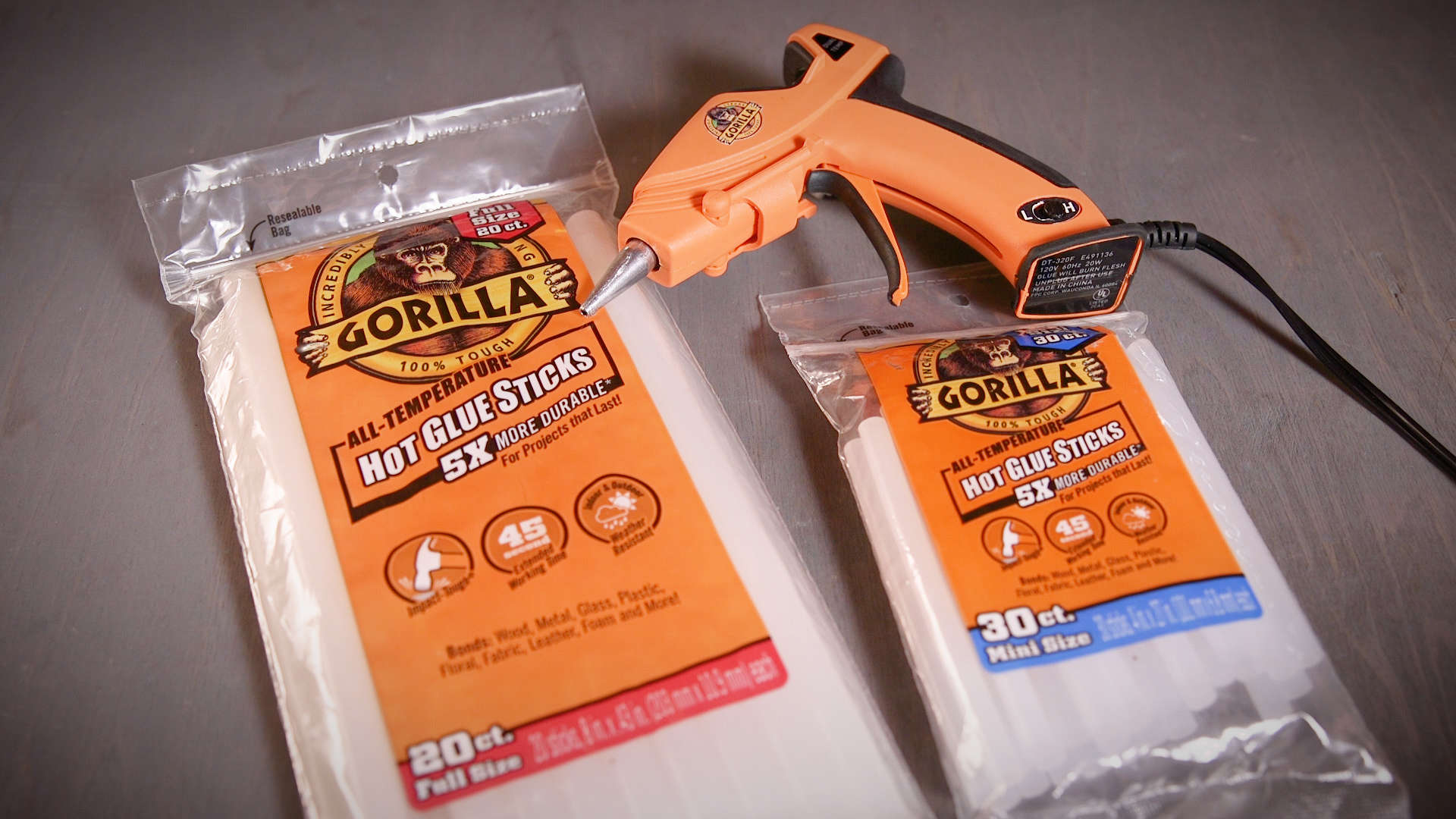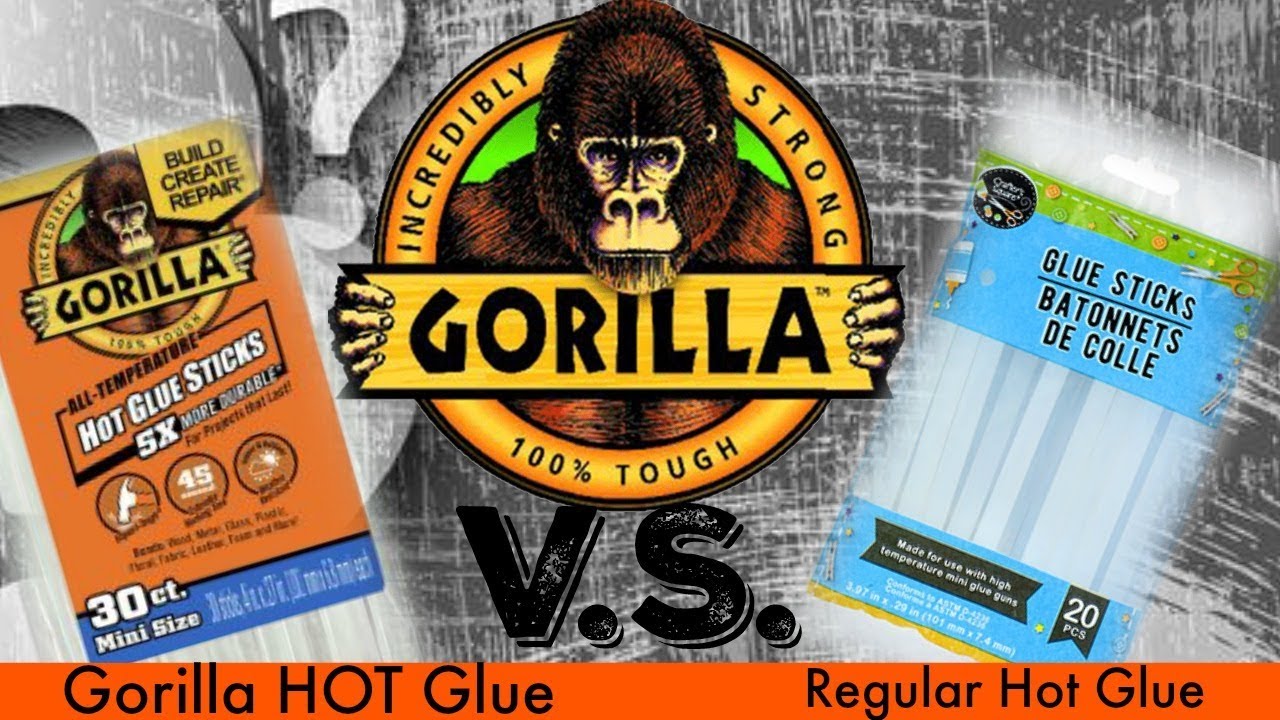When choosing between hot glue and Gorilla Glue, consider the materials and strength needed. Hot glue is ideal for quick fixes and projects, while Gorilla Glue offers stronger, long-lasting bonds.
Both have their advantages and best uses depending on the task at hand. Hot glue is versatile and dries quickly, making it great for crafts and light-duty repairs. On the other hand, Gorilla Glue provides a durable bond for heavier materials like wood and metal.
Understanding the differences between hot glue and Gorilla Glue will help you select the right adhesive for your project, ensuring a successful outcome every time.
Introduction To Adhesive Powerhouses
Discover the adhesive powerhouses in the showdown between hot glue and Gorilla Glue. Uncover the strengths and weaknesses of these two popular adhesives to help you choose the right one for your next project.
Hot glue and Gorilla glue are both popular choices when it comes to adhesive solutions. Hot glue, also known as hot melt adhesive, is a versatile adhesive that is applied in a molten state and solidifies as it cools. It is commonly used for crafts, DIY projects, and in the manufacturing industry due to its quick drying time and strong bonding properties. On the other hand, Gorilla glue is a polyurethane adhesive known for its strength and versatility. It bonds to a wide range of materials, including wood, metal, ceramics, and more. Gorilla glue expands as it cures, providing a strong and durable bond. Both glues have their unique characteristics and advantages, making them suitable for different applications.
Hot Glue Basics
Hot glue is easy to use and requires a hot glue gun to apply. It is available in stick or cartridge form, which can be loaded into the gun for application. The molten glue is dispensed through the gun’s nozzle and quickly solidifies upon contact with the surface. Hot glue bonds well to various materials such as fabric, paper, plastic, and even some metals. It is ideal for temporary or semi-permanent applications, as it can be easily removed or repositioned if needed. However, it may not be the best choice for heavy-duty or long-lasting bonds.
Gorilla Glue Fundamentals
Gorilla glue, on the other hand, is a polyurethane adhesive that comes in a liquid form. It requires moisture to activate and create a strong bond. Gorilla glue is known for its versatility and ability to bond a wide range of materials. It is particularly effective for bonding porous surfaces such as wood, stone, and foam. Once applied, Gorilla glue expands as it cures, filling gaps and creating a strong bond. It is waterproof and can withstand extreme temperatures, making it suitable for both indoor and outdoor applications. However, it requires careful application and can be challenging to remove once cured.

Chemical Composition And Properties
When it comes to hot glue ingredients, they typically include synthetic rubber, resin, and wax. On the other hand, Gorilla Glue formula contains polyurethane, isocyanate, and other proprietary compounds. The chemical composition and properties of these adhesives determine their bonding strength and versatility. Hot glue is known for its quick drying time and suitability for porous materials, while Gorilla Glue offers strong and durable bonds, particularly on non-porous surfaces. Understanding the differences in their chemical makeup can help in choosing the right adhesive for various crafting and repair projects.
Setting Time And Curing Process
Hot glue sets quickly, providing speedy adhesion for immediate use. On the other hand, Gorilla Glue requires a longer curing duration for optimal bonding, typically around 24 hours.
Bonding Strength And Durability
Hot Glue and Gorilla Glue are both known for their strong bonding strength and durability. These adhesives provide reliable and long-lasting bonds for various projects, making them popular choices among DIY enthusiasts and professionals alike. Whether you need to stick together materials for crafts or repair heavy-duty items, both hot glue and Gorilla Glue offer exceptional adhesive properties that ensure your projects withstand the test of time.
| Bonding Strength and Durability | |
|---|---|
| Strength Comparison: | Hot glue and Gorilla glue offer different bonding strengths. Hot glue is known for its quick-drying and strong initial bond, making it suitable for lightweight materials and temporary fixes. On the other hand, Gorilla glue is renowned for its exceptional bonding power, creating a strong and long-lasting bond between various materials, including wood, metal, and plastic. |
| Longevity of Bonds: | When it comes to the longevity of bonds, Gorilla glue outshines hot glue. Gorilla glue forms a durable bond that can withstand various environmental conditions, including moisture, heat, and cold. This makes it ideal for projects that require long-term durability. However, hot glue may not provide the same level of longevity, as it can weaken over time and may not withstand extreme conditions. |
Material Compatibility
When choosing between hot glue and Gorilla Glue, it’s essential to consider material compatibility. Hot glue is best for crafts and quick fixes, while Gorilla Glue offers versatility for various materials. Hot glue works well on plastic, wood, and fabric, making it ideal for art projects and DIY repairs. On the other hand, Gorilla Glue excels with wood, stone, metal, and glass, providing a strong bond for construction and heavy-duty repairs. Understanding the best uses for each adhesive ensures successful projects and long-lasting results.
Temperature And Weather Resistance
Hot glue and Gorilla glue are both temperature and weather resistant, but they differ in their bonding strength. Hot glue is ideal for temporary bonds, while Gorilla glue provides a strong and permanent bond. When deciding which glue to use, consider the intended use and the materials being bonded.
| Temperature and Weather Resistance |
| Hot glue can soften in high temperatures, impacting its durability. In extreme cold, Gorilla Glue may lose adhesion. |
| Hot Glue in Various Climates |
| Hot glue performs well in moderate climates but may struggle in extreme heat or cold conditions. |
| Gorilla Glue and Environmental Factors |
| Gorilla Glue excels in varied weather conditions due to its resilience and waterproof properties. |
Ease Of Use And Application
Hot Glue: Easy to apply, melts quickly, user-friendly for crafts and DIY projects.
Gorilla Glue: Requires precision, longer drying time, challenging for beginners, strong bond once set.

Safety And Toxicity Concerns
Hot glue and gorilla glue are popular adhesive options, but safety and toxicity concerns differ between the two. Hot glue is generally considered safe and non-toxic, while gorilla glue contains harmful chemicals and should be used with caution.
| Hot Glue | Gorilla Glue |
| Can cause burns, so handle with care | Can emit strong fumes, use in well-ventilated areas |
| Apply on surfaces away from skin to prevent injuries | Wear gloves to avoid skin contact |
| Keep away from children and pets | Store in a cool, dry place |
Cost-effectiveness And Value
Explore the cost-effectiveness and value of Hot Glue versus Gorilla Glue for your projects. Consider the durability and versatility of Gorilla Glue, while also weighing the affordability and ease of use of Hot Glue. Make an informed choice based on your specific needs and budget.
| Hot Glue | Gorilla Glue |
| Cost-effective choice for craft projects. | Higher initial cost but lasts longer. |
| Affordable and easy to find in stores. | Investment for heavy-duty repairs. |
| Great for quick fixes and small tasks. | Provides strong and durable bonds. |
User Reviews And Industry Ratings
| Consumer Feedback on Hot Glue | Professional Opinions on Gorilla Glue |
|
Users have reported that hot glue is quick and easy to use for various crafting and repair projects. It is especially favored for its fast drying time and strong bond on materials like paper, fabric, and wood. |
Industry experts often praise Gorilla Glue for its versatility and durability. It is known for creating strong and long-lasting bonds on a wide range of materials, including wood, metal, and plastic. |
Creative And Unconventional Uses
Hot glue and Gorilla glue are both versatile adhesives that have creative and unconventional uses in various DIY projects. Hot glue is commonly used for quick and temporary fixes, such as attaching decorations to surfaces or repairing small items. It is also popular in arts and crafts for its fast-drying and strong bonding properties.
Gorilla glue, on the other hand, is known for its incredible strength and durability. It is often used for more permanent repairs, such as bonding heavy materials like wood, metal, or plastic. Gorilla glue expands as it cures, filling in gaps and creating a strong bond.
Some innovative applications for hot glue include creating custom phone cases, jewelry, or even unique home decor items. It can also be used to make non-slip grips on tools or to secure loose screws.
Gorilla glue can be used in DIY projects like building furniture, repairing broken ceramics, or even constructing outdoor structures. Its waterproof and weather-resistant properties make it ideal for outdoor projects.
| Hot Glue | Gorilla Glue |
|---|---|
| Quick and temporary fixes | Strong and permanent bonding |
| Ideal for arts, crafts, and small repairs | Great for heavy materials and outdoor projects |
| Fast-drying and strong bonding | Expands as it cures, filling gaps |

Final Verdict In The Adhesive Arena
Hot glue and Gorilla glue each have their own strengths and weaknesses. Hot glue is great for quick fixes and craft projects, while Gorilla glue offers a stronger, more permanent bond. When choosing the right glue for the job, consider the materials you’re working with and the durability required. Hot glue is ideal for lightweight materials and temporary bonds, while Gorilla glue is best for heavy-duty applications and permanent fixtures. In the showdown between hot glue and Gorilla glue, the final verdict ultimately depends on the specific needs of your project.
Frequently Asked Questions
What Is The Difference Between Hot Glue And Gorilla Glue?
Hot glue is a thermoplastic adhesive that melts when heated and solidifies when cooled. It is best used for bonding materials that are not exposed to high stress. Gorilla glue, on the other hand, is a polyurethane-based adhesive that creates a strong, durable bond and works well on a variety of surfaces.
Can Hot Glue Be Used Instead Of Gorilla Glue?
Hot glue can be used as a substitute for gorilla glue in some applications, but it is not as strong or durable. Hot glue is best for lightweight materials, while gorilla glue is better for heavy-duty projects.
Is Hot Glue Or Gorilla Glue Better For Woodworking Projects?
It depends on the specific woodworking project. Hot glue is great for temporary holds and small projects, while gorilla glue is better for heavy-duty and permanent applications. Gorilla glue also fills gaps and creates a strong bond that can withstand stress and pressure.
Is Hot Glue Or Gorilla Glue Easier To Use?
Hot glue is easier to use because it melts quickly and can be applied with a glue gun. Gorilla glue, on the other hand, requires more preparation and time to set. It also requires clamping to ensure a strong bond.
Conclusion
Overall, both hot glue and Gorilla glue have their own unique advantages and disadvantages depending on the project at hand. Hot glue is great for quick and easy fixes while Gorilla glue is best for strong and long-lasting bonds. It is important to consider the materials you are working with and the strength and durability required before choosing between the two.
Ultimately, both types of glue have their place in the crafting and DIY world and can be useful in their own ways.

